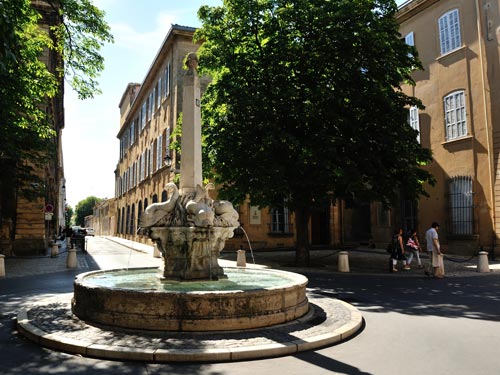
Aix-en-Provence
Wandering through squares, along fountains, churches and chapels…
Next to the plateau of Entremont, birthplace of the Celto-Ligurian tribe the Salluviens, the former Colonia Aqua Sextiae is not far away from the Mont Sainte-Victoire, world wide known because Cézanne painted it so many times. The beautiful fountains and the warm sun light on the stone façades make Aix a stunning city.
Aix is the first Roman colony in the Provincia Narbonensis (today's Southern France), the forum is still partly visible underneath today's cathedral. Here, like in most of the Roman towns, the forum zone became later the bishop's area.
Aix became the capital of Provence in the XIIth century and was included in 1481 in the French kingdom. Mazarin destroyed the ramparts just to show his power. He also organized the Cours Mirabeau and the new "quartier Mazarin" from 1648 on. The Mediterranean is not far and the town became a very wealthy merchant city.
This is how the extraordinary Aixois baroque style appeared and your Provence tour guide will show you a number of gorgeous private mansion facades but also wonderful churches and chapels. Of course Paul Cézanne will be included in this walk.
Paul Cézanne
Paul is born in 1839, his father first owned a hat shop and later became a banker (Paul Cézanne never had any real money problems like other painters). He went to the lycée Mignet with his friend Émile Zola but the the very courageous attitude of Zola in the Dreyfuss affair ended their friendship. The Granet museum was the art school where Cézanne attended drawing lessons. He spent most of his life here and the Mont Sainte-Victoire, the Bibemus stone quarries and the views of the Estaque village with it red roofs (the very start of cubism) were painted here.His former mansion Jas de Bouffan belongs today to the Aix University, his former atelier des Lauves is still open to the public.



